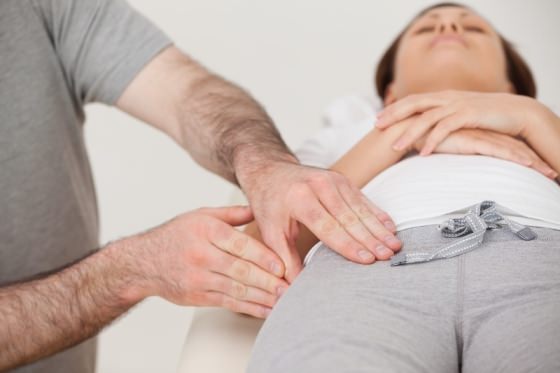There are different types of hernias, but most of them occur in one single place: a person’s abdomen. A person’s abdominal wall is a strong area comprised of tendons and muscles which runs from a person’s ribs down to their groin and legs. This area is considered a kind of ‘corset’ which protects and holds in a person’s internal organs in the abdomen, most notably the intestines.
If any sort of fragility or weakness occurs in the abdominal wall, the area may no longer be properly protected and the result is that anything that pushes against the wall may likely punch through into the opening. This shows itself as a lump or bulge that is visible on the skin, called a hernia. There are also some naturally weaker parts of the abdominal wall, such as the femoral and inguinal canals, which allow the channel of various vessels through to a person’s scrotum and legs. Another naturally weak area is the navel or umbilical area, so this area is prone to the development of a hernia as well.
What you need to know about hernia symptoms: The fact is that most types of hernia do not exhibit any painful symptoms. Additionally, a larger hernia may even be less painful than a smaller one for the simple reason that a larger ‘weak spot’ or opening in a person’s abdominal wall allows the person’s intestine to push through more smoothly and easily. Pain associated with hernias only tends to happen when a part of a person’s anatomy is being squeezed.
When a person begins to experience painful symptoms with a hernia, this could be a sign of something more serious. This may point to the beginning of strangulation, which requires emergency surgery. But even those who do not have any painful symptoms are advised not to wait until they experience pain – it is best to address the problem before pain actually occurs.
Diagnosis for hernia:A hernia is most commonly seen as a kind of swelling or bulge under a person’s skin. This swelling around a particular area in the groin, scrotum, or inner thigh also shows itself more when a person coughs, stands, or tries to lift something up, and it usually disappears when a person lies down. In most cases, diagnosing a hernia is simple: the obvious bulge or swelling is a very common sign. But in some cases, especially when the hernia symptoms are ambiguous or inconclusive, further diagnostic tests may be required, such as an ultrasound, a CT scan, or an MRI.
Treatment for hernia: Some patients, who do not experience any initial pain with their hernia, can ‘watch and wait’ until they begin experiencing pain. But this watching and waiting option is not really advisable as the hernia can worsen, grow larger, and may even present the threat of strangulation, where a part of the bowel is trapped and restricts the person’s supply of blood. In time, a hernia can be painful enough to affect a person’s quality and enjoyment of life, and this is the time when people most often opt for hernia surgery.
There are two main methods of hernia repair: open and keyhole (or laparoscopic) surgery. But even with these two different methods, the objective is the same – to push back the swelling or lump and return the person’s intestine to where it should be located inside the cavity. The weak part on the abdominal wall will also be closed and strengthened. Open surgery is where a large incision is made in order to push back the hernia. Keyhole or laparoscopic surgery is where three small incisions are made where the specialist inserts a laparoscope and other instruments in order to put the hernia back into place. This method is minimally invasive and requires a shorter period of recovery than open surgery or stitching.
If you are looking for the best and most experienced surgeons offering hernia surgery Londonand laparoscopic surgery London, look no further than the London Surgical Group, which has been specializing in hernia surgery, gallstone surgery, and other advanced treatments for many years.

